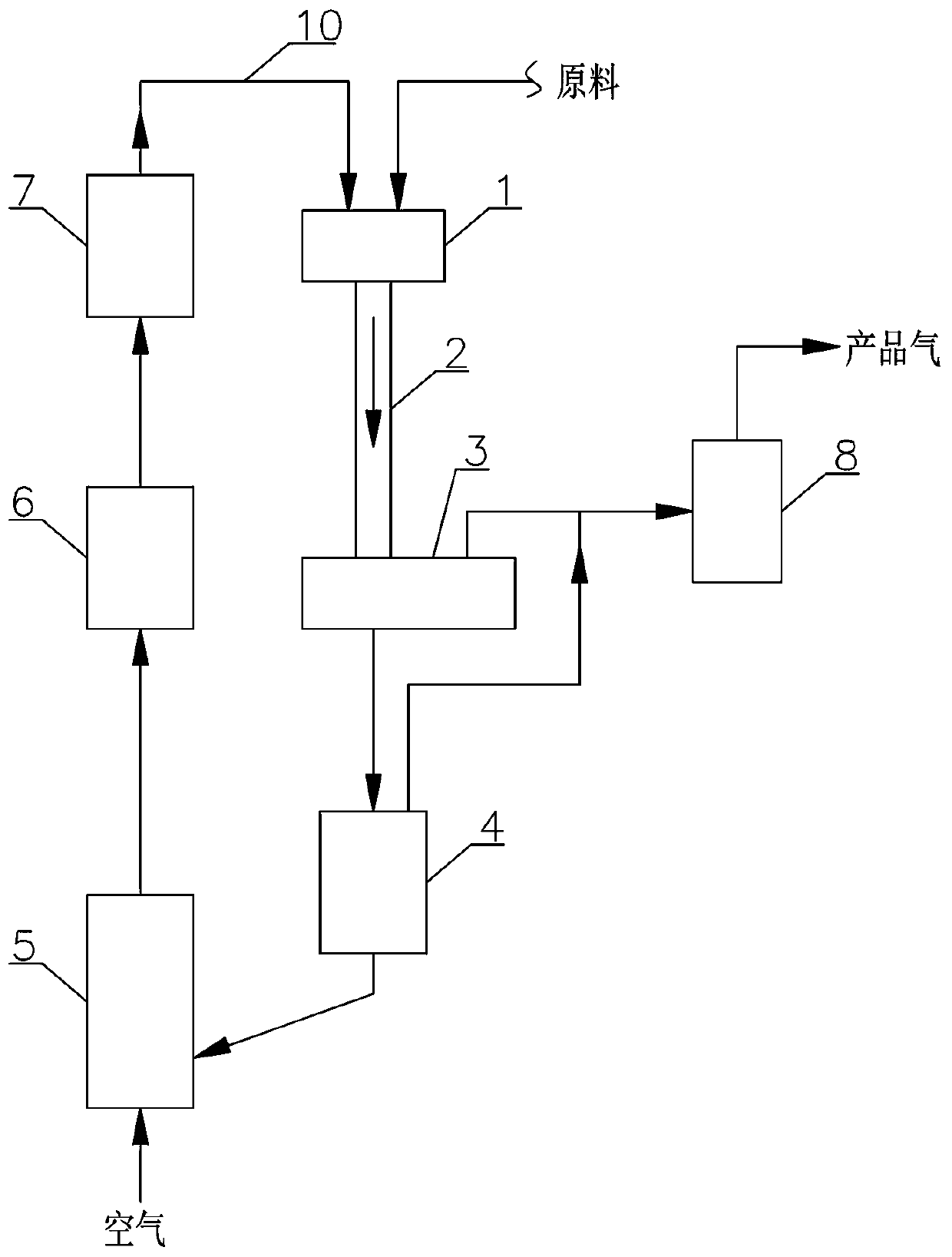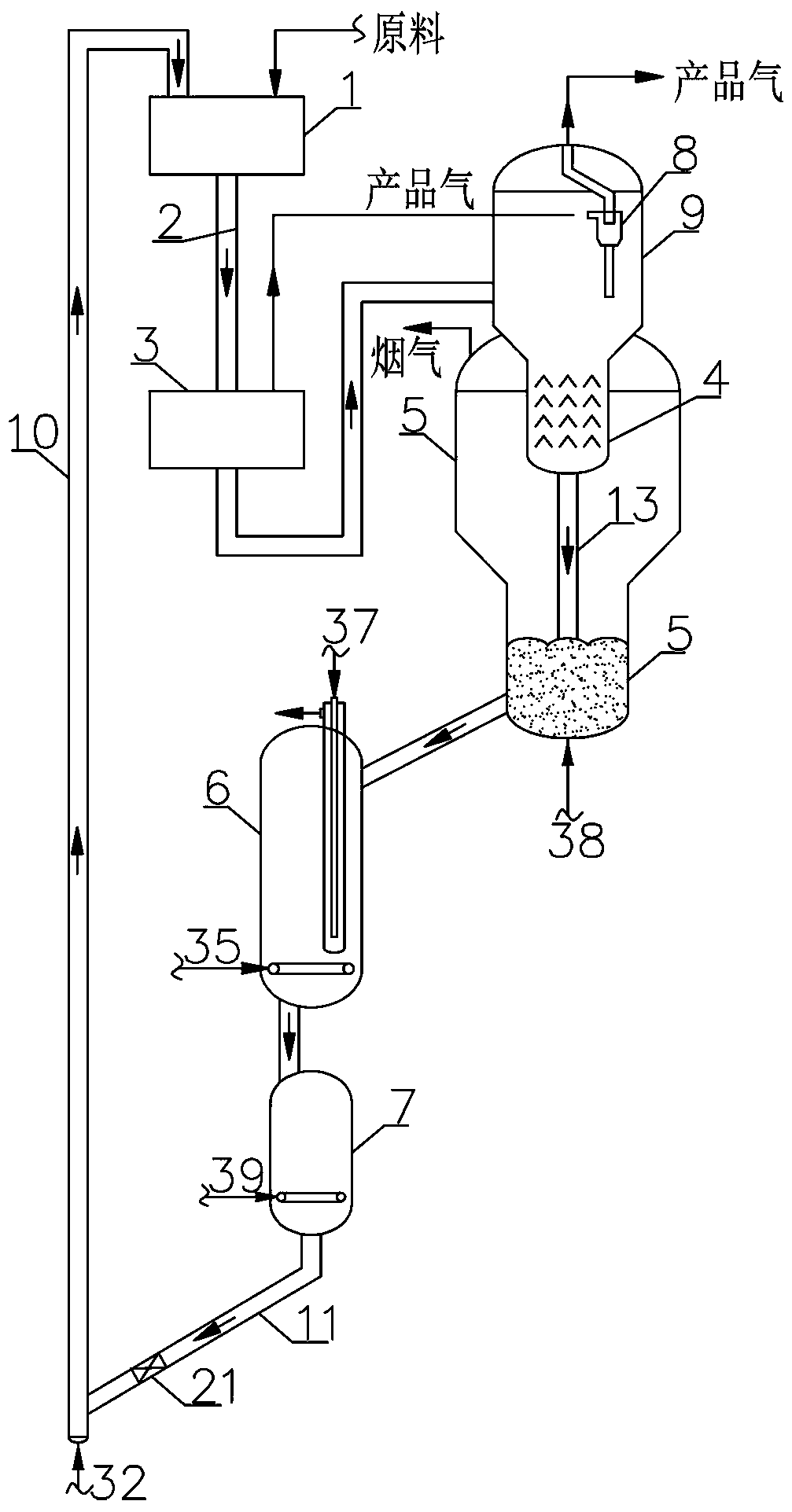Downer reactor light hydrocarbon catalytic converting method and device
A catalytic conversion method and bed reactor technology, which is applied in the field of increasing olefin production by using down-bed reactors, can solve the problems of intensified thermal cracking, increased yield, and decreased yield, and achieve enhanced mixing, increased yield, and increased density. Effect
- Summary
- Abstract
- Description
- Claims
- Application Information
AI Technical Summary
Problems solved by technology
Method used
Image
Examples
example 1
[0087] For example 1, the raw material of the down-bed reactor is catalytically cracked gasoline, and the down-bed reactor needs to adopt a super large agent-oil ratio of 30, so as to realize optimal reaction temperature distribution, improve reaction selectivity, improve propylene and gasoline yield, and increase the yield in gasoline. The aromatics content and octane number, the purpose of reducing the olefin content in gasoline.
[0088] This example uses figure 2 or image 3 The shown process flow, the prior art shown in Table 1 and the process conditions of the present invention and the molecular sieve catalyst (CHP-1) producing more propylene, gasoline feedstock and test results are listed in Table 2.
[0089] The results shown in Table 2 show that due to the limitation of the heat balance of the down-bed reactor, when the feed temperature of 400° C. is used in the prior art scheme B, the agent-oil ratio under the heat balance is only 12.1. Such a low ratio of agent t...
example 2
[0097] For Example 2, the feedstock for the down-bed reactor was olefin-rich mixed C4. This example uses figure 2 or image 3 Shown process flow, prior art shown in table 3 and process condition of the present invention and ZSM-5 molecular sieve catalyst.
[0098]The down-bed reactor usually needs to be operated with a super-large agent-to-oil ratio greater than 30 in order to optimize the reaction temperature distribution, improve reaction selectivity, and increase the yield of ethylene and propylene. However, the results in Table 3 show that when the feed is fed at a high temperature of 400°C, due to the limitation of the heat balance of the down-bed reactor, the agent-oil ratio under the heat balance of the prior art is only 16.3. Such a low F / O ratio will seriously affect the conversion and selectivity of the down-bed reactor
[0099] The properties and test results of the mixed C4 raw materials used in the present invention are listed in Table 4. Table 4 shows that t...
PUM
 Login to View More
Login to View More Abstract
Description
Claims
Application Information
 Login to View More
Login to View More - R&D
- Intellectual Property
- Life Sciences
- Materials
- Tech Scout
- Unparalleled Data Quality
- Higher Quality Content
- 60% Fewer Hallucinations
Browse by: Latest US Patents, China's latest patents, Technical Efficacy Thesaurus, Application Domain, Technology Topic, Popular Technical Reports.
© 2025 PatSnap. All rights reserved.Legal|Privacy policy|Modern Slavery Act Transparency Statement|Sitemap|About US| Contact US: help@patsnap.com



